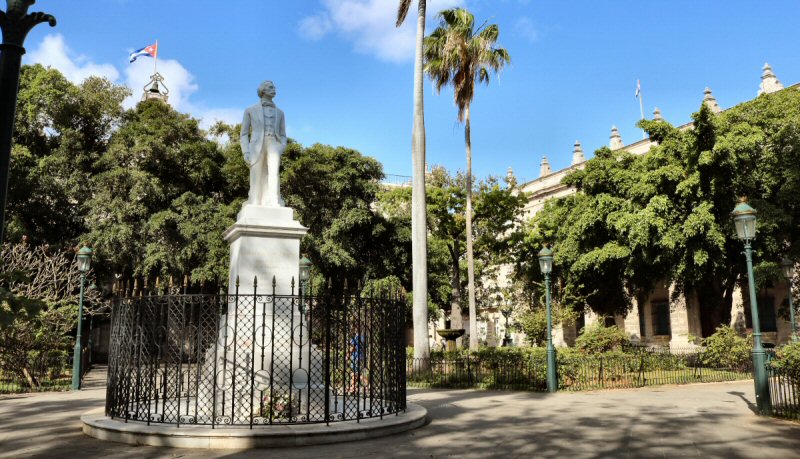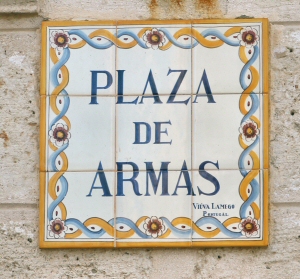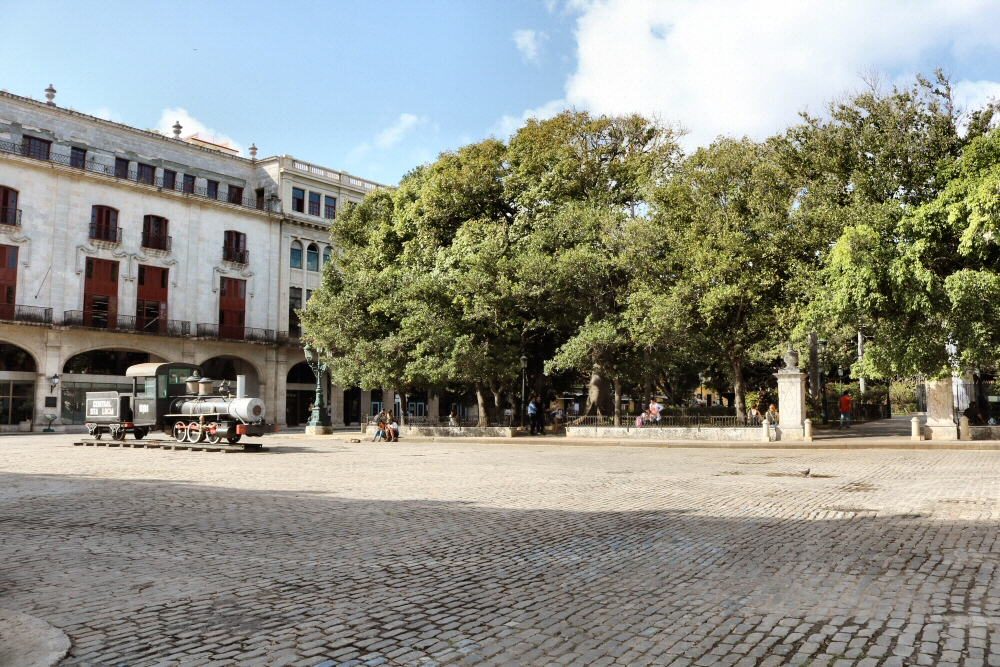

Plaza de Armas is the first square of Havana, established when it evolved from town to city. In other words, the city grew from the Plaza de Armas. Initially, it was a place, surrounded by houses of prestigious families, where the inhabitants of the city met and spent time together. Originally, it was known as Plaza de Iglesia, attributed to the church Parroquial Mayor that once stood on the place of the current Palacio de los Capitanes Generales.

Towards the end of the 16th century,
when the Castillo de la Real Fuerza (Castle of Royal Force) was
built, the square acquired its definitive form. It became a
place where the soldiers of the Royal Force were making their
military exercises, so that it received the name Plaza de Armas.
Day by day it lost its public character, but it regained its
popularity after the demolition of the church Parroquial Mayor
and the construction of some new buildings around the Plaza de
Armas, such as the Palacio del Segundo Cabo and Palacio de los
Capitanes Generales, in the 18th century.
In 1834, the Governor and the Captain General Miguel Tacón commanded to remodel the square again, so that some green areas were added to the place and the statue of the Spanish king Fernando VII was erected in the center of the square. During the late 18th century, the square was a place where the members of the wealthy aristocrat families of Havana dressed up and took a stroll.
Towards to the middle of the 20th century the square fell into disrepair and became quite shabby, but it succeeded to maintain its function as a political and administrative space, although it was also the site of some musical concerts and formal evening promenades, alongside with the military parades.
Today, it is surrounded by distinguished
colonial buildings, spanning four centuries, several of which
serve as museums now, such Museo de la Ciudad de La Habana that
is located in the Palacio de los Capitanes Generales, and the
Palacio del Segundo Cabo. Extensive restoration of the square to
its former beauty began in 1935.
On the east side of the square, there is
the Museo Nacional de Historia Natural, and the Biblioteca
Pública. On the north side of the square, at the end of the
Baratillo street, stands the Hotel Santa Isabel that was the old
mansion of the Counts of Jaruco and then Santovenia. On the
initiative of the American Luis Lay, it was transformed into a
hotel around 1867.
The streets that are forming the edges
of the square, are laid down properly with cobblestones. It is a
silent place where the tourists and the inhabitants of the city
rest under the shades of the trees sitting on the stone benches
of the park that occupies a big area in the quadrangle square.
Formerly, the street on the west side of the square (the O’Reily
street) was laid down with wooden parquet to muffle the sound of
horse hooves, so that passing of the carriages would not disturb
the governor’s sleep. Later, the street was paved with blocks of
inferior quality that soon deteriorated.
The park has some small fountains. The
white marble statue of Carlos Manuel de Céspedes, the Father of
the Nation, was erected in the center of the park. In 1955, the
statue of the Spanish King Ferdinand VII was removed, and it was
replaced by the statue of Carlos Manuel de Céspedes. It is
surrounded by royal palms and ceiba trees. The sculpture is the
work of the Cuban artist Sergio López Mesa. The statue of
Ferdinand VII, together with the statue of Carlos V, were placed
on the O’Reily street between the Castillo de la Real Fuerza and
the Palacio del Segundo Cabo.
At the southwest corner of the square
stands the popular bar-restaurant, La Mina. In the 16th century
it was the house of Dona Maria Cepero that was shot down by the
fire of an arquebus, while she was praying in the Parroquial
Mayor in 1557. In the honor of Maria Cepero, a tombstone was
erected in the church Parroquial Mayor. It is the first funerary
monument of Cuba and the visitors can see it in the courtyard of
the Palacio de los Capitanes Generales, installed in the wall.
This place was also occupied by a school for orphan girls in the
17th century.

The Plaza de Armas is in
front of the Castillo de la Real Fuearza, very close to the
Malecón, bordered by the O’Reilly, Obispo, Barillo and the Cuba
Tacón streets.